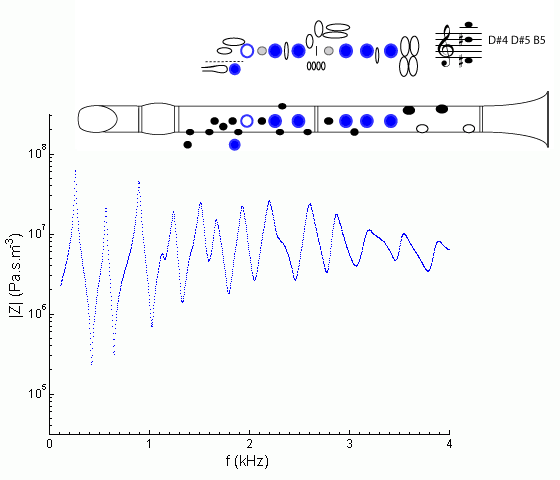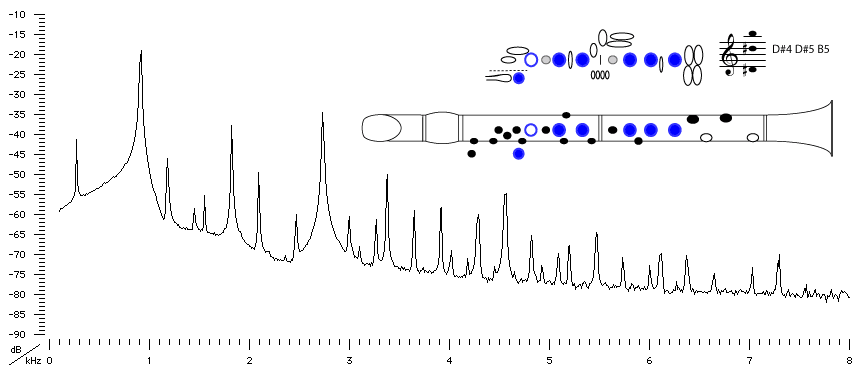| Acoustics of the clarinet |
Bb clarinet |
multiphonic
|
| |
|
||||||||||
| |
|
|
|
|
|
|
|
|
|
|
|
| |
|
|
|
|
|
|
|
|
|
|
|
| |
|
|
|
|
|
|
|
|
|
|
|
| |
|
|
|
|
|
|
|
|
|
|
|
| |
|
|
|
|
|
|
|
|
|
||
|

|
Fingering Acoustic schematic Non-specialist introduction
to acoustic impedance Notes are the written pitch. |
Here, the D#4 may be considered as produced by a variant of the E4 fingering, with cross fingering to make it flatter. The D#5 and B5 are produced by the second and third peaks in the impedance spectrum, which one could consider as the second and third resonances of a modified fingering for G3, with the open key acting as a register hole.

Sound spectrum
of a Bb clarinet
played using fingering for the multiphonic D#4, D#5 and B5.
For more explanation, see
Introduction to clarinet acoustics
![]()
![]() You can hear the multiphonic D#4, D#5 and B5
played.
You can hear the multiphonic D#4, D#5 and B5
played.
|
Contact:
Joe Wolfe
/ J.Wolfe@unsw.edu.au |